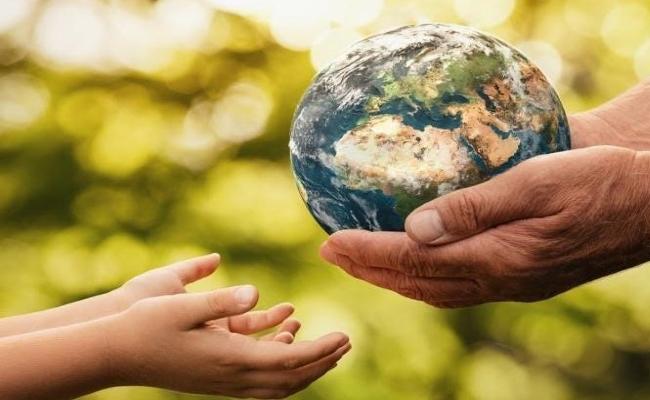Meeting Climate Commitments, Reducing Poverty Not Mutually Exclusive Outcomes

The world has set itself the goal of halving greenhouse gas emissions relative to 2010 levels by 2030, to avoid more than 1.5 degrees Celsius of global warming. Within this, India has committed its own set of climate targets.
Humanity also aims to eradicate extreme poverty - people living on less than USD 1.9 per day – by 2030. The achievement of climate goals and a reduction in poverty may not be mutually exclusive outcomes. Eliminating extreme poverty may not impede efforts to mitigate climate change. There is evidence to back this.
Findings of a 116-country study by the University of Groningen suggest that in 2014, the top 1% of global carbon emitters were responsible for 15% of emissions. The study drew stark parallels, based on disparity in emission patterns. Among them was the finding that the average American had 15 times the carbon footprint of the average Indian.
Researchers then modeled the effect poverty reduction may have on greenhouse gas emissions. People living in extreme poverty consume less and therefore have a tiny carbon footprint. Their carbon footprint is, as per the study, one tenth the footprint of the average person. Around 364 million Indians are extremely poor. Lifting them out of extreme poverty will lead to a mere 4% increase in India's emissions. Similarly, lifting the over 1.2 billion people living in extreme poverty globally, would result in a mere 1% increase in the world's emissions.
Poverty is a complex problem that necessitates multi-pronged solutions and a consistency in efforts to fight it. A combination of interventions in everything from access to basic infrastructure, education, disease eradication and wellbeing, livelihood creation and protection provides answers.
The government has made efforts to increase the ease of living of citizens and dispel poverty. It has invested in increasing access to education, healthcare, and basic public infrastructure. Earlier this month, our country achieved the milestone of providing 100 million rural households with potable tap water connections under the Jal Jeevan Mission. The scheme envisages linking every rural household with a functional tap by 2024. When Prime Minister Narendra Modi launched the Jal Jeevan Mission in 2019, only about one-sixth of rural households had doorstep-water supply. Now, around 53% have it.
Much has also been done to eradicate diseases of which India carries a colossal burden. India aims to eradicate AIDS and Malaria by 2030. Steps with wide-ranging impact have resulted in a 66% decline in estimated number of annual new HIV infections in India from 2000 to 2015, against the global average of 35%. AIDS related deaths declined by 54% from 2007 to 2015 against the global average of 41% decline during 2005-2015.
A national strategy to fight Malaria is in place. Organizations like Malaria No More are fueling the fight to end malaria in India but broad-based private sector participation will be key. Private sector participation drives technological innovation in tracking and reporting hidden malaria cases. This, coupled with robust policy and mechanisms for malaria reporting from India’s private health sector will help estimate the true burden of the disease in the country.
Likewise, initiatives geared at education, skill development and livelihood creation have a vital role to play. State governments have schemes for each of these areas. Take the case of Madhya Pradesh. The state's budget for tribal welfare in financial year 2020-21 was 10 times more than the budgetary provision made in 2003-04. The state administration has overseen the implementation of welfare schemes such as the Mukhyamantri Awas Sahayata Yojana, the Kanya Saksharta Protsaahan Yojana, and the Vimukt Jati Hostel Yojana to provide tribal students housing, food, and scholarships and ensure they learn, upskill, and become ‘atmanirbhar’ (self-reliant).
While governments have made concerted efforts, they have also been supported by the civil society in increasing the reach and efficacy of grassroots initiatives. I have had the good fortune of witnessing the work of Smile Foundation. The NGO has, through initiatives like Shiksha Na Ruke, Project Manzil and Smile Twin e-Learning Program, impacted the lives of thousands of young people from the marginalized sections of the society.
The world is looking at India to present a model of climate-conscious poverty reduction. We are in a crucial phase of development and must continue to attack the multi-faceted and layered problem of poverty through rigorous implementation and monitoring of social development initiatives. Only this will make development truly inclusive, substantive, and sustainable.
-- By Dr. Aatish Parashar, Dean and Head, Central University of South Bihar





